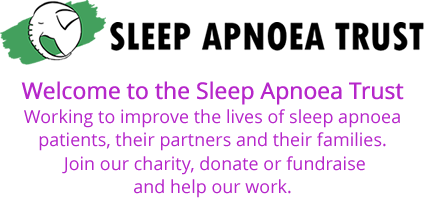About Sleep Apnoea
What is Sleep Apnoea?
Sleep apnoea, is a sleep disorder in which pauses in breathing or periods of shallow breathing during sleep occur more often than normal. Each pause can last for a few seconds to a few minutes and can happen many times a night. There are four main types of sleep apnoea:
1. Obstructive Sleep Apnoea (OSA) – is a respiratory illness and the most common type, where the upper airway is narrow or has become blocked due to being obese or overweight
2. Central Sleep Apnoea (CSA) is an uncommon neurological illness, where the brain does not signal the respiratory muscles to breathe.
3. Mixed Sleep Apnoea is a combination of OSA and CSA.
4. Obesity Hypoventilation.
Obstructive Sleep Apnoea (OSA)
People with Obstructive Sleep Apnoea (OSA) are unable to sleep properly. Their sleep is constantly disrupted by snoring and obstructed breathing to the extent that they briefly stop breathing. This can happen several hundred times each night. Sufferers often fall asleep during the day even whilst working or driving.
OSA is caused by excessive narrowing of the throat during sleep. Anything that makes the throat narrower to start with (for example enlarged tonsils or a set-back lower jaw) means that it is easy for the throat to close off a bit more and block the airway. A partially blocked nose generates lower pressures in the throat whilst taking a breath in, which tends to suck the walls of the throat together.
For the majority of sufferers, the most important factor is being overweight with a big neck. Extra fat in the neck squashes the throat from outside, particularly when the throat muscles become floppier with sleep.
Central Sleep Apnoea (CSA)
Central Sleep Apnoea (CSA) differs from OSA in that while your breathing stops and eventually restarts, the brain signalling you to breathe again due to low oxygen levels should occur—BUT DOES NOT. With CSA the signal from the brain to breathe is either not sent or not received. The incidence of CSA is far lower that OSA and is thought to be around one in two thousand of the adult population. In very, very simple terms, OSA is a mechanical blockage treated by increasing air pressure to overcome the blockage while CSA is an electrical fault, where the connection between the brain and the breathing muscles is faulty, possibly in the brainstem.
Mixed Sleep Apnoea
Mixed sleep apnoea, the third type, is a combination of central and obstructive factors occurring in the same episode of sleep apnoea. Episodes of mixed sleep apnoea most often begin as obstructive apnoeas and are treated as such, but the standard treatment, a CPAP device, does not reduce the stop breathing episodes to around 5 or below.
Obesity Hypoventilation (Also known as Pickwickian Syndrome)
Obesity hypoventilation syndrome is a breathing disorder that affects some people who have been diagnosed with obesity. The syndrome causes you to have too much carbon dioxide and too little oxygen in your blood. Without treatment it can lead to serious and even life-threatening health problems. It is commonly associated with obese people who also suffer from obstructive sleep apnoea
For more information click on these links to DIAGNOSIS and TREATMENT


